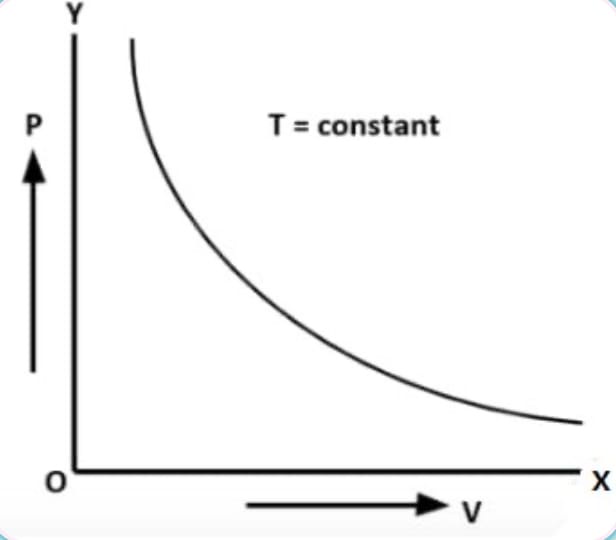
CHEMISTRY OBJ
01-10: BBCCAEDECE
11-20: DDBCADEEAD
21-30: ACADCDDBAE
31-40: CCBCECACBA
41-50: CCBDCAEBBA
51-60: BBDDCACBCC
Completed
================
ANSWER FOUR(4) QUESTIONS ONLY
(1a) (i) Hydrogen gas is colorless and odorless.
(ii) Hydrogen is highly flammable, which means it can easily catch fire when exposed to a flame or spark.
(iii) Hydrogen gas has low density, making it lighter than air.
(1b)
(I) Group 17 (halogens)
(II) lodine
(III) lodine
(1ci)
I. Calcium (Ca²⁺)
II. Magnesium (Mg²⁺)
(1cii)
I. lon exchange method
II. Lime-soda method
(1di)
(I) Methyl orange is used in the titration of a strong acid with a strong base.
(II) Phenolphthalein is used in the titration of a strong base with a strong acid.
(1dii)
(I) Hydrated salt: Copper(II) sulfate pentahydrate (CuSO₄.5H₂O)
(II) Acidic salt: Ammonium chloride (NH₄Cl)
(III) Basic salt: Sodium carbonate (Na₂CO₃)
(1ei)
2-methylbutane >>> pentane >>> 2,2-dimethylpropane
(1eii)
(I) 1-bromo-3-methylbutane
(II) 2-methylpentane
(1eiii)
Benzene is used as a starting material in the production of various important chemicals such as ethylbenzene, cumene, cyclohexane, and nitrobenzene.
(1eiv)
Saponification is a process in which ester molecules are hydrolyzed in the presence of a strong base (such as sodium hydroxide or potassium hydroxide) to form alcohol and the salt of the carboxylic acid.
(1f)
Given, Vapour density = 77
molecular mass of XCl₄ = Molecular mass = Vapour density x 2 = 77 x 2 = 154
Molecular mass of XCl₄ = X + 4(Atomic mass of Cl)
154 = X + 4(35.5)
X = 154 – 142
X = 12
:. The relative atomic mass of X is 12.
================================
READ MORE: NABTEB Chemistry Practical Answers For 2024
(2ai) A molar solution (M) is a solution that contains one mole of solute (dissolved substance) per liter (dm³) of solution.
(2aii) Convert volume from cm³ to dm³:
250cm³=0.250dm³
Number of moles of Na₂CO₃ = Concentration(mol/dm³) × Volume (dm³)
= 0.10mol/dm³ x 0.25 dm³
= 0.025mol
Mass of Na₂CO₃ = Number of moles x Molar mass(g/mol)
= 0.025 mol x 106 g/mol
= 2.65 g
(2bi)
(i) K > 1: Indicates that, at equilibrium, the concentration of the products is greater than the concentration of the reactants. The reaction favors the formation of products.
(ii) K < 1:Indicates that, at equilibrium, the concentration of the reactants is greater than the concentration of the products. The reaction favors the formation of reactants.
(iii) K = 1: Indicates that, at equilibrium, the concentrations of reactants and products are equal. Neither the reactants nor the products are favored.
(2bii) (i) Temperature: Increasing temperature can shift the equilibrium position depending on whether the reaction is endothermic or exothermic.
(ii) Pressure: For reactions involving gases, changing the pressure can affect the equilibrium position.
(iii) Concentration: Altering the concentration of reactants or products can shift the equilibrium.
(2ci) (I) Strong acids completely dissociate in water, while weak acids partially dissociate
(II) Strong acids have a high tendency to donate protons, whereas weak acids have a lower tendency
(2cii) (I) Covalent compounds have low melting and boiling points
(II) They are generally insoluble in water
(III) Covalent compounds tend to be soft and brittle.
(2di) Diagram

(2dii) The monosaccharides contained in sucrose are glucose and fructose.
(2diii) (I) Temperature: High temperatures can cause proteins to unfold and lose their functional shape.
(II) pH Levels: Extreme pH levels (either too acidic or too basic) can disrupt the hydrogen and ionic bonds that maintain a protein’s structure.
================================================
(3ai) (i) Stage 1: Production of sulfur dioxide:
S(s) + O₂(g) ==> SO₂(g)
(ii) Stage 2: Conversion of sulfur dioxide to sulfur trioxide:
2SO₂(g) + O₂(g) <==> 2SO₃(g)
(iii) Stage 3: Absorption of sulfur trioxide in water to form tetraoxosulphate (VI) acid:
SO₃(g) + H₂O(l) ==> H₂SO₄(l)
(3aii) (i) Temperature: Increasing the temperature can increase the rate of reaction by providing more kinetic energy to the molecules involved. However, this may not always favor the equilibrium position.
(ii) Pressure: For gaseous reactions, increasing the pressure can shift the equilibrium towards the side with fewer moles of gas molecules.
(iii) Concentration: Higher concentrations of reactants can increase the rate of reaction, but it may not affect the position of equilibrium.
(3aiii) (i) Relative positions of ions in the electrochemical series.
(ii) Concentration of ions in the electrolyte solution.
(iii) Nature of the electrodes.
(3b) Molar mass of MgSO₄= Mg + S +4 * O
Molar mass of MgSO₄= 24 + 32 + (4*16) = 24+32+64= 120g/mol
The molar concentration in mol/dm³= 0.75mol/dm³
Given the mass concentration of the hydrated salt= 184.5g/dm³
Mass concentration=molar concentration * molar mass of MgSO₄⋅XH₂O
184.5 = 0.75 * molar mass of MgSO₄⋅XH₂O
Molar mass of MgSO₄⋅XH₂O= 184.5/0.75 = 246g/mol
Molar mass of MgSO₄⋅XH₂O= molar mass of MgSO₄ + X * molar mass of H₂O
246 = 120 + X * (2*1+16)
246 = 120 + X * 18
246 = 120 + 18X
X = (246 – 120)/18
X = 126/18
X = 7
(3ci)
Reduction refers to the process where an atom, ion, or molecule gains electrons, leading to a decrease in its oxidation number.
(3cii)
The oxidizing agent in the reaction is Br₂
(3ciii)
(I) Contain carbon-hydrogen bonds.
(II) Often have covalent bonding.
(III) Can be highly complex in structure.
(3civ)
(I) Plants (e.g., olive oil, sunflower oil)
(II);Animals (e.g., butter, lard)
============================================
READ THIS: NECO Mathematics 2024 Questions & Answers
(4ai) Allotropy is the existence of two or more different forms of the same element in the same physical state.
(4aii) Carbon
(4aiii) (I) It is used in carbonated beverages to provide fizziness.
(II) It is used in fire extinguishers as it is denser than air and can displace oxygen, thereby suffocating the fire.
(4bi) Al³⁺
(4bii) Calcium reacts with oxygen to form calcium oxide (CaO):
2Ca + O₂ ==> 2CaO
Molar mass of calcium: 40g/mol
Molar mass of oxygen: 16g/mol
Number of moles of Ca = 4.8g/40g/mol = 0.12mol
Number of moles of O₂ = 0.12mol (since it’s a 1:1 ratio)
Mass of oxygen required = 0.12mol x 16g/mol = 1.92g
(4ci)
(I) X is Iron(III) oxide (Fe₃O₄) and Y is Hydrogen gas (H₂)
(II) Equation: 3Fe + 4H₂O ==> Fe₃O₄ + 4H₂
(4cii)
Yellow color (lead iodide, PbI₂)
(4ciii) Diagram

(4di)
Nitrogen prepared from air is often denser than pure nitrogen because it contains impurities, mainly argon and small amounts of other gases. These impurities increase the overall mass per unit volume of the gas mixture compared to pure nitrogen, making it denser. When nitrogen is extracted from the air, it is typically around 99.9% pure, but that 0.1% of impurities, such as argon, oxygen, and trace gases, can still affect its density.
(4dii)
Percentage composition of sodium in NaNO₃:
Percentage of an element = (Atomic mass of the element * Number of atoms of the element/molecular mass of the compound) * 100
Molar mass of NaNO₃:
Na: 23g/mol
N: 14g/mol
O: 16g/mol * 3 = 48g/mol
= 23 + 14 + 48 = 85 g/mol
Percentage of Na:
(Mass of Na / Molar mass of NaNO₃) x 100%
= (23/85) * 100
= 0.2706 x 100
= 27.06%
(4diii)
(I) Ammonia (NH₃): Heavy chemical
(II) Drugs: Fine chemicals
(III) Sodium hydroxide (NaOH): Heavy chemical
================================
(5ai)
(I) A is NH₃ (Ammonia) and B is HCl (Hydrochloric acid).
(II) Decomposition reaction
(5aii)
(I) All members of a homologous series have the same functional group, which gives them similar chemical properties.
(II) There is a gradual change in physical properties (such as boiling point, melting point, and solubility) as the molecular mass increases.
(5aiii)
(I) lonic bond
(II) Covalent bond
(III) Metallic bond
(5bi)
(I) Anhydrous Copper(II) Sulfate (CuSO₄)
(II) Cobalt(II) Chloride Paper (CoCl₂)
(5bii)
(I) Ensure the burette is calibrated correctly
(II) Use a white tile or paper to read the meniscus clearly
(III) Take readings with the eye level at the meniscus
(5ci)
(I) Atomic radius:
-Across the Period: Atomic radius decreases from left to right across a period. This is because the number of protons in the nucleus increases, pulling the electrons closer to the nucleus due to stronger electrostatic attraction.
-Down the Group: Atomic radius increases down a group. This is because additional electron shells are added, making the atom larger despite the increase in nuclear charge.
(II) Ionization energy:
-Across the Period: Ionization energy increases from left to right across a period. This is due to the increasing nuclear charge, which holds the electrons more tightly and requires more energy to remove one.
-Down the Group: Ionization energy decreases down a group. As the atomic radius increases, the outer electrons are farther from the nucleus and are less strongly attracted, making them easier to remove.
(5cii)
(I) Potassium (K): 1s² 2s² 2p⁶ 3s² 3p⁶ 4s¹
(II) Magnesium (Mg): 1s² 2s² 2p⁶ 3s²
(III) Oxygen (O): 1s² 2s² 2p⁴
(5di)
(I) H⁺ (hydronium ion)
(II) H₃O⁺ (hydronium ion)
(5dii)
A physical change is a change in which the substance undergoes a change in state or form, but its chemical composition remains the same. Examples include melting, freezing, boiling, condensation, and sublimation.
==============================
(6ai)
Ethene: C₂H₄ has a double bond between two carbon atoms.
Ethyne: C₂H₂ has a triple bond between two carbon atoms.
(6aii)
Polyacetylene
(6aiii)
Structure of Polyethylene:
(-CH=CH-)n
(6bi)
(I) Fehling’s solution added to reducing sugar: Precipitate formation (red precipitate indicates presence of reducing sugar)
(II) Millon’s reagent added to protein: White precipitate formation (indicating presence of protein)
(III) Sodium metal dropped into ethanol: Vigorous reaction, flame, and formation of sodium ethoxide
(6bii)
Solubility of KCIO (potassium hypochlorite):
Molar mass of KCIO₃: 39 + 35.5 + (3*16) = 122.5g/mol
Convert mass of
KCIO₃ to moles = 4.9/122.5 = 0.04mol
Volume of water = 20cm³ = 0.02dm³
Solubility S in mol/dm³ = moles of KCIO₃/Volume of water in dm³ = 0.04/0.02
Solubility= 2.0mol/dm³
(6ci)
(I) It is a colorless liquid at room temperature.
(II) It has a characteristic odor.
(III) It is miscible with water in all proportions.
(6cii)
Equations for preparation of ethanol from ethene:
(I) C₂H₄ + H₂O ==> C₂H₅OH (hydration reaction)
(II) C₂H₄ + H₂SO₄ ==> C₂H₅HSO₄ (sulfonation reaction)
(III) C₂H₅HSO₄ + H₂O ==> C₂H₅OH + H₂SO₄ (hydrolysis reaction)
(6di)
(I) It is used in the manufacture of glass.
(II) It is used in water softening and as a cleaning agent.
(6dii)
(I) They often exhibit variable oxidation states.
(II) They form colored compounds and ions.
(III) They have catalytic properties due to their ability to adopt multiple oxidation states and their surface structures.

Leave a Reply